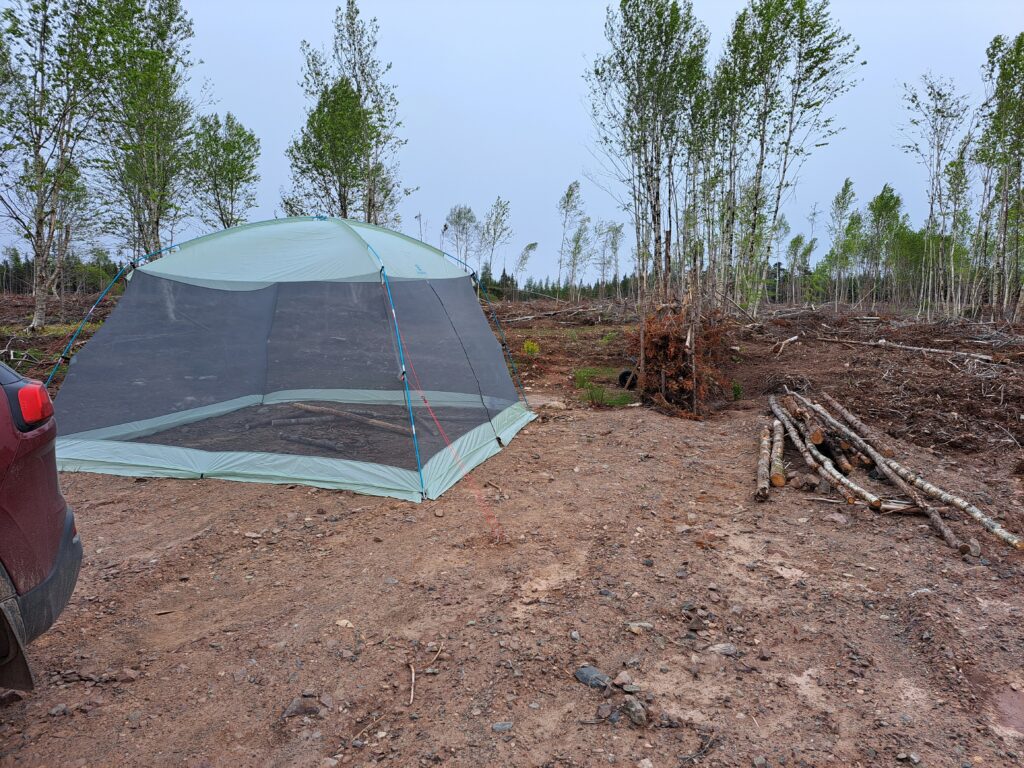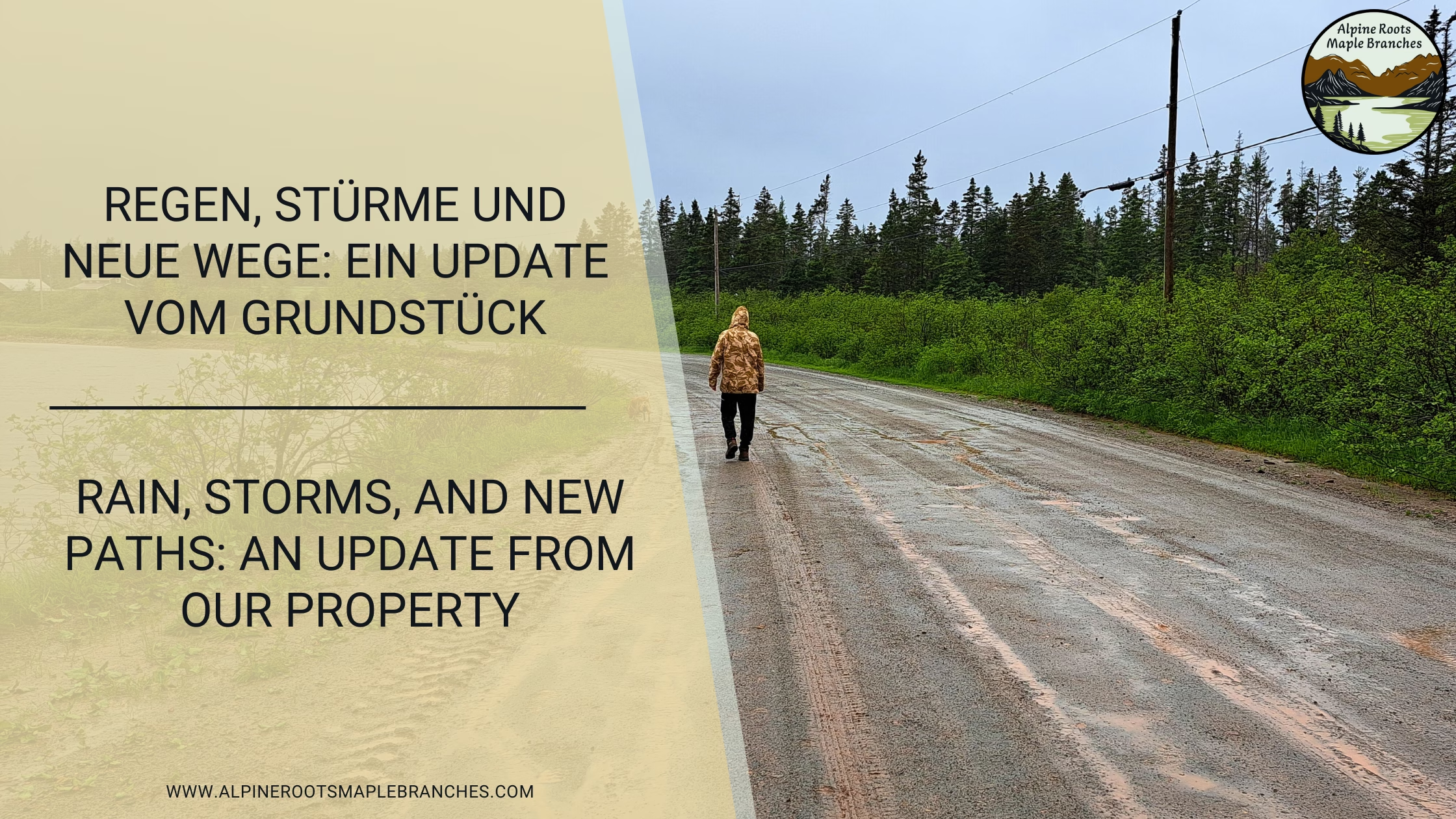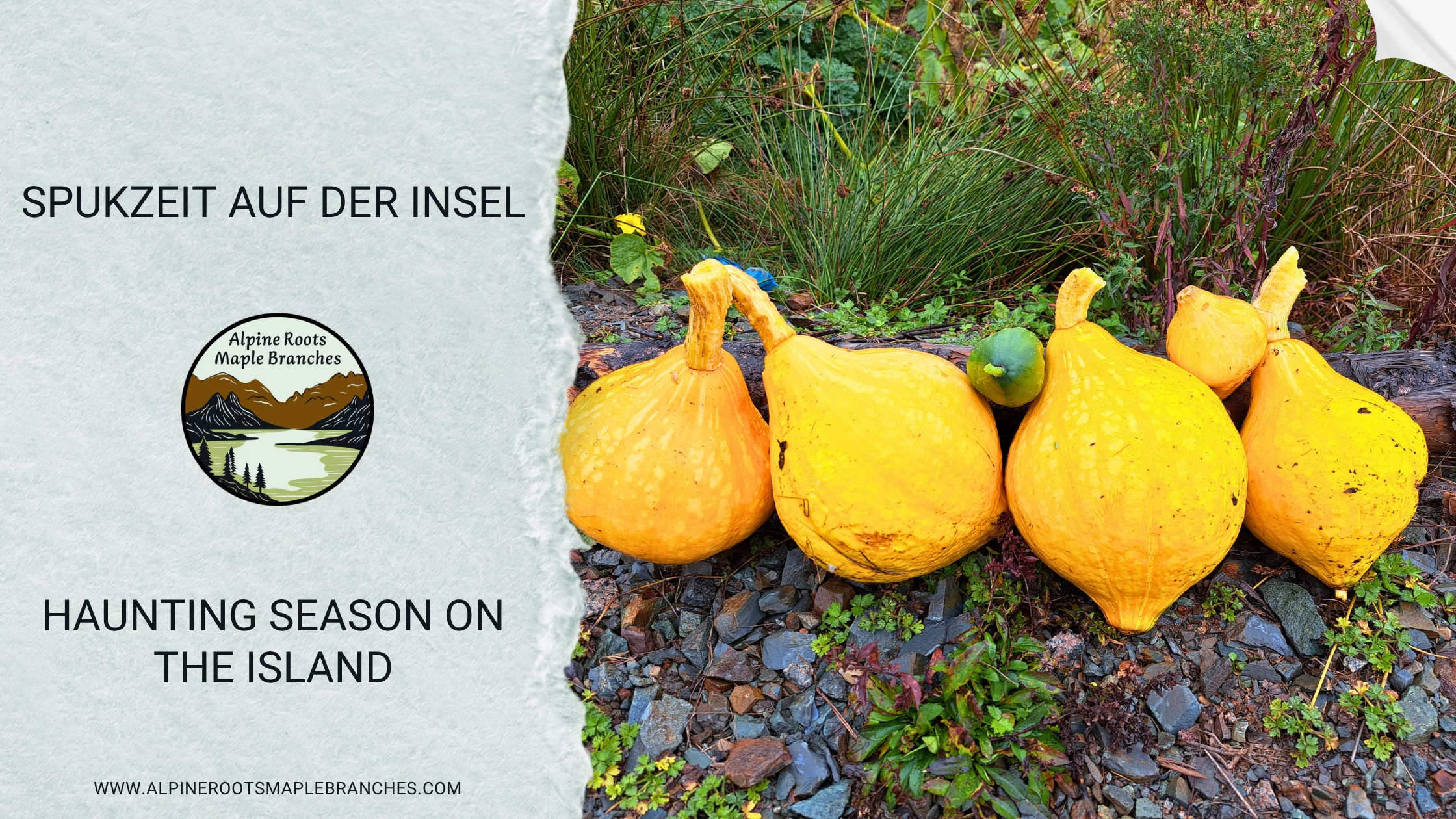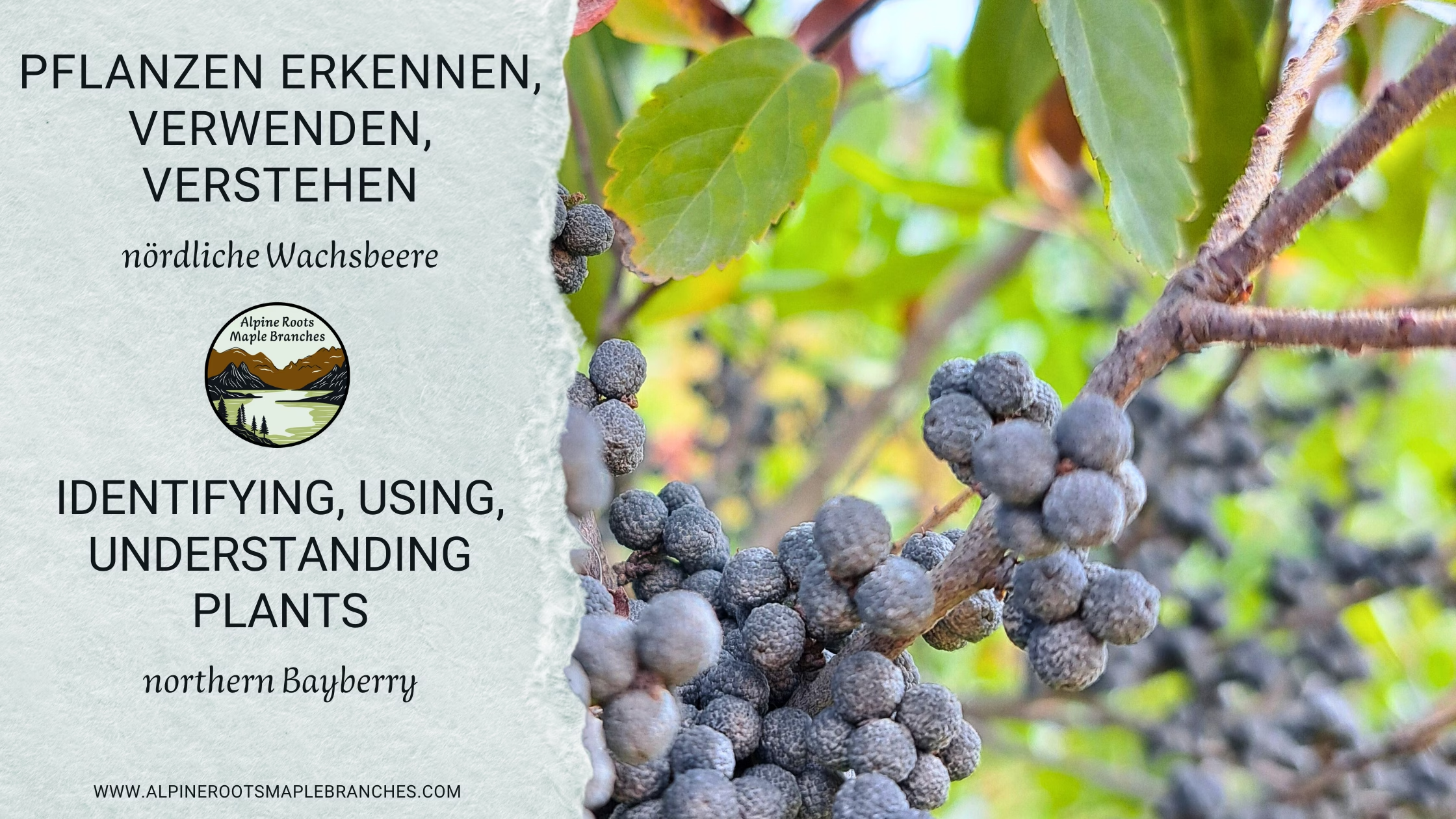The past few days have been marked by rain – sometimes light, sometimes heavy, even with stormy conditions. But as any dog owner knows, the weather doesn’t matter. Diana needs to go out, no matter how unpleasant it is outside, so we ventured through the rain.
These rainy conditions also showed us how water flows across our property and where it collects – things that are harder to gauge during dry conditions. Such observations are invaluable for planning sustainable permaculture. It’s essential to understand how water moves across the land to ensure that both soil and plants are optimally supplied with moisture, while also preventing erosion or flooding.
A Tent Against the Blackflies
Another small project these days was setting up a tent with mosquito netting walls. This retreat isn’t just for us but especially for Diana, who used to hide in the car to escape the blackflies. Now she can relax in the tent as long as she manages to lie down calmly. Of course, she tends to follow us everywhere, especially Gernot, but in the tent, she has a quiet place to escape the flies. It’s been a relief to have a spot where she can find some respite from the insects, and it also allows us to stay outside without constantly being bothered by the flies.

Discovering New Paths
We found a new walking route. It’s a maintenance road used as an access route for the power lines running from the Wreck Cove power plant across Cape Breton. Wreck Cove is the largest hydroelectric plant in Nova Scotia and a significant part of the region’s power grid. It collects water from the highlands of Cape Breton and generates 212 MW of renewable energy annually. Wreck Cove is the only plant in the province that can go from zero to full output in less than 10 minutes.
Unfortunately, we encountered another illegal dumping site along this route. It seems that people living in areas with abundant, intact nature often don’t see the need for environmental conservation. The beauty and importance of their surroundings are often not recognized or appreciated.
Progress on the Windbreak and Clearing Work
Our windbreak, which we had already begun, has been further expanded. In a previous post, we discussed how we started it and the benefits it offers to our property. Especially now, as we frequently face strong winds, the windbreak is a crucial addition. During the work, we also gathered tree trunks left from the clearing. We’re still deciding on which project to use them for – possibly raised beds or homemade shelters and small storage areas. There are many options, and the decision will depend on what we plan to build next.
The First Storm – and Its Effects
Then came our first major storm. Some of the trees on the freshly cleared land couldn’t withstand the strong winds and toppled over. This often happens in such areas, as the trees, once their neighbors are removed, are left without the usual protection from the surrounding vegetation and are suddenly exposed to much stronger winds. Our tent, which was advertised as „stormproof,“ also didn’t hold up – a clear reminder of how unpredictable and powerful nature can be.
Your Thoughts?
Have you had similar experiences with property planning challenges or building windbreaks? We’d love to hear from you! Share your stories, tips, or questions with us – the exchange with our community is very important to us.





